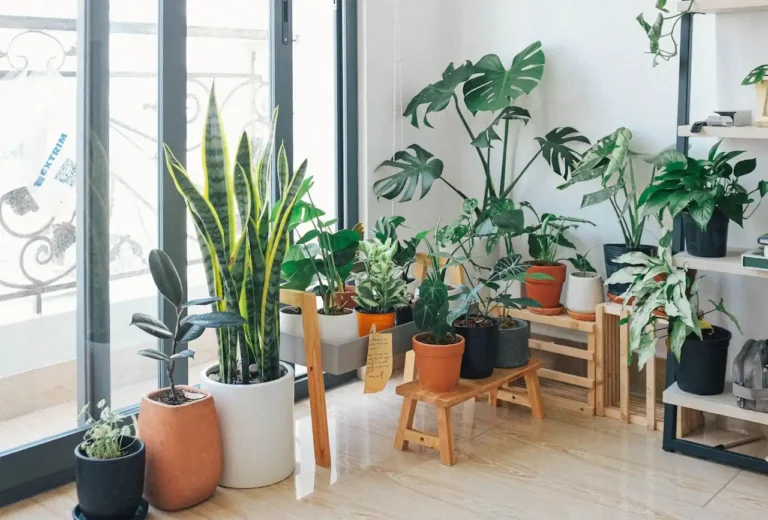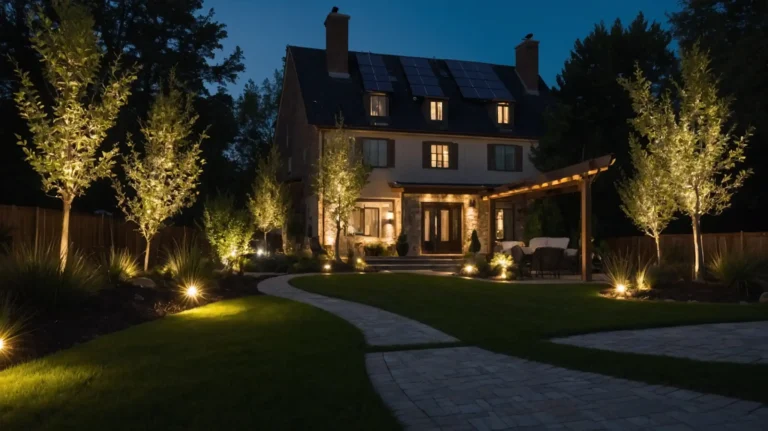27 Stunning Pathway Ideas to Transform Your Outdoor Space in 2025
Pathways serve as both functional routes and design features that guide visitors through your outdoor sanctuary.
These walkways connect different areas while adding structure and visual interest to your landscape.
Well-designed paths prevent trampled grass and help protect your garden beds from foot traffic.
They also create an opportunity to showcase your personal style in an unexpected way.
From budget-friendly DIY solutions to more elaborate designs, these creative pathway ideas will inspire you to transform your yard into a more navigable and beautiful space.
1: Mixed Material Magic

Combine different materials like stone, brick, and wood for a pathway with personality and texture.
This approach creates visual rhythm and interest as visitors move through your yard.
The juxtaposition of various elements makes your path a focal point rather than just a functional feature.
Try alternating sections of materials or creating borders with contrasting elements.
2: Stepping Stone Trail

Place individual stepping stones in creative patterns to form a whimsical path through grass or groundcover.
This allows greenery to grow between stones, softening the look of your walkway.
Choose circular, rectangular, or irregularly shaped stones for different effects.
The spacing between stones encourages mindful walking and creates a more interactive garden experience.
3: Illuminated Evening Walkway
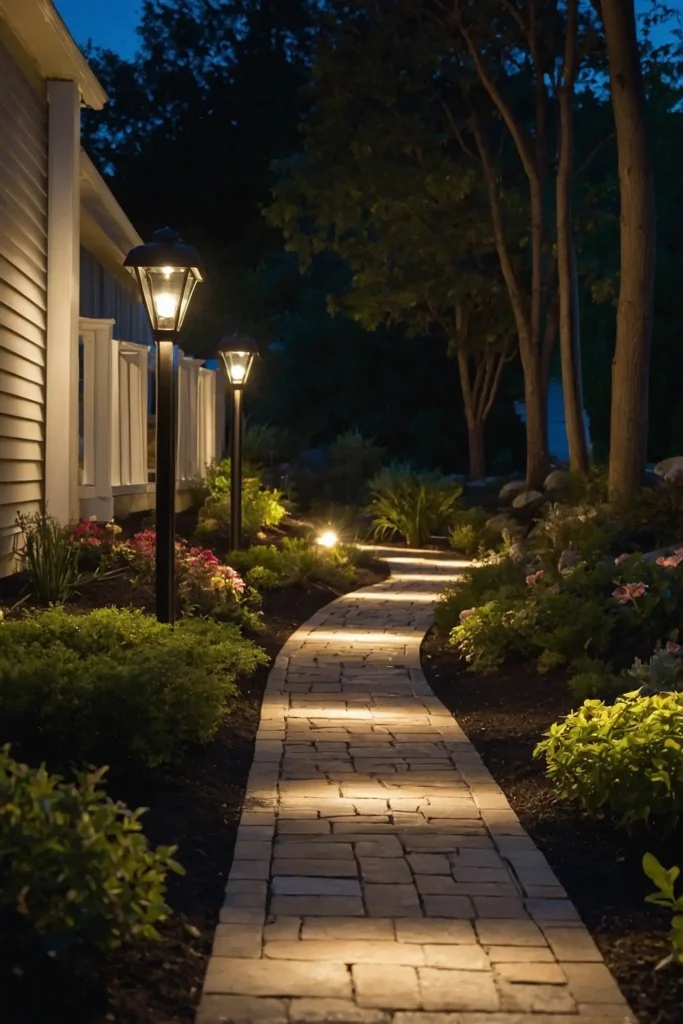
Install solar-powered or low-voltage lights along your pathway for safety and ambiance after dark.
These lights transform your garden into an enchanting nighttime retreat.
Choose fixtures that direct light downward to highlight the path without causing glare.
Position lights at consistent intervals for a professional look that guides visitors safely through your yard.
4: River Rock Riverbed
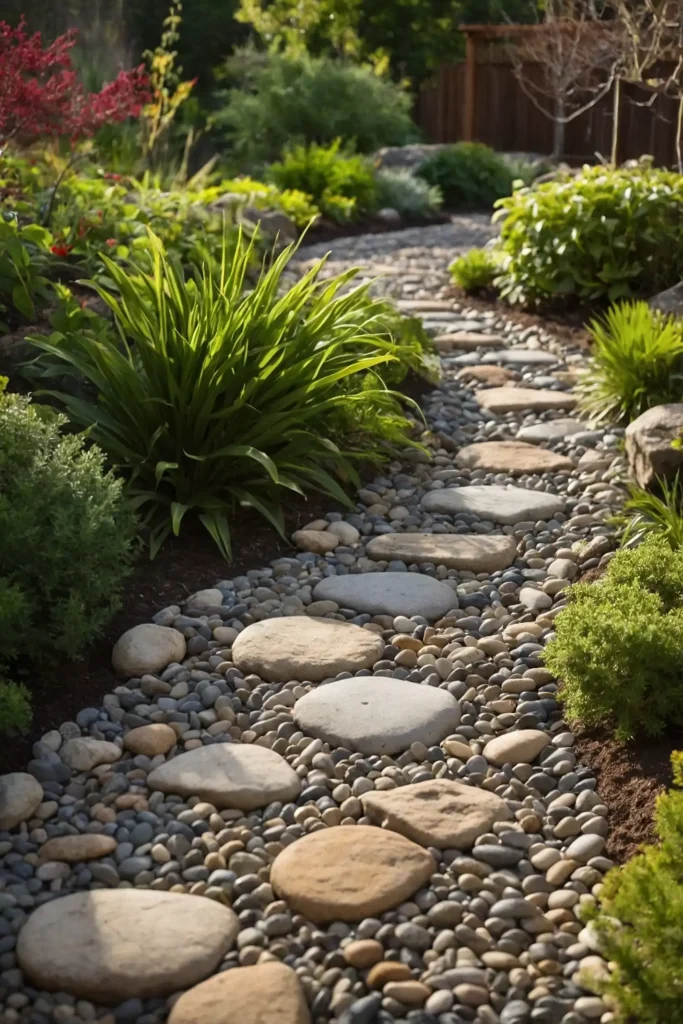
Create a dry creek bed pathway using smooth river rocks in varying sizes.
This design mimics a natural waterway while providing excellent drainage during rainy periods.
Edge your river rock path with larger boulders or plants for definition.
This nature-inspired walkway works beautifully in woodland gardens or yards with a natural aesthetic.
5: Herringbone Brick Pattern
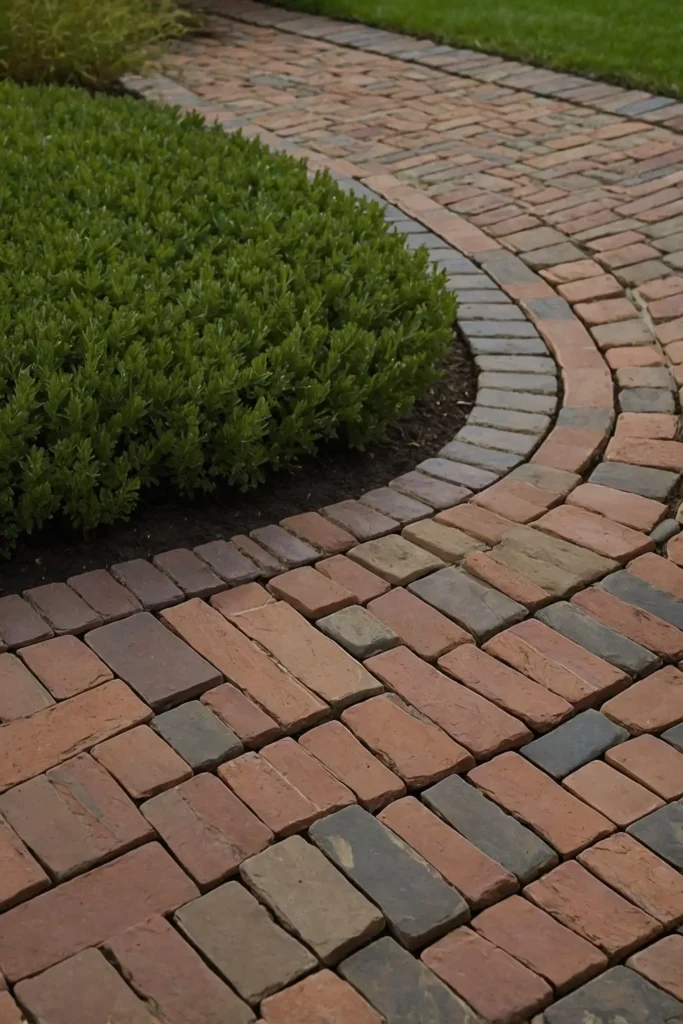
Lay standard bricks in a classic herringbone pattern for a timeless path with visual movement.
This traditional design adds sophistication to both formal and casual garden styles.
The diagonal arrangement creates the illusion of movement and draws the eye forward.
Choose weathered bricks for a cottage garden feel or new, uniform bricks for more modern settings.
6: Grass and Paver Checkerboard
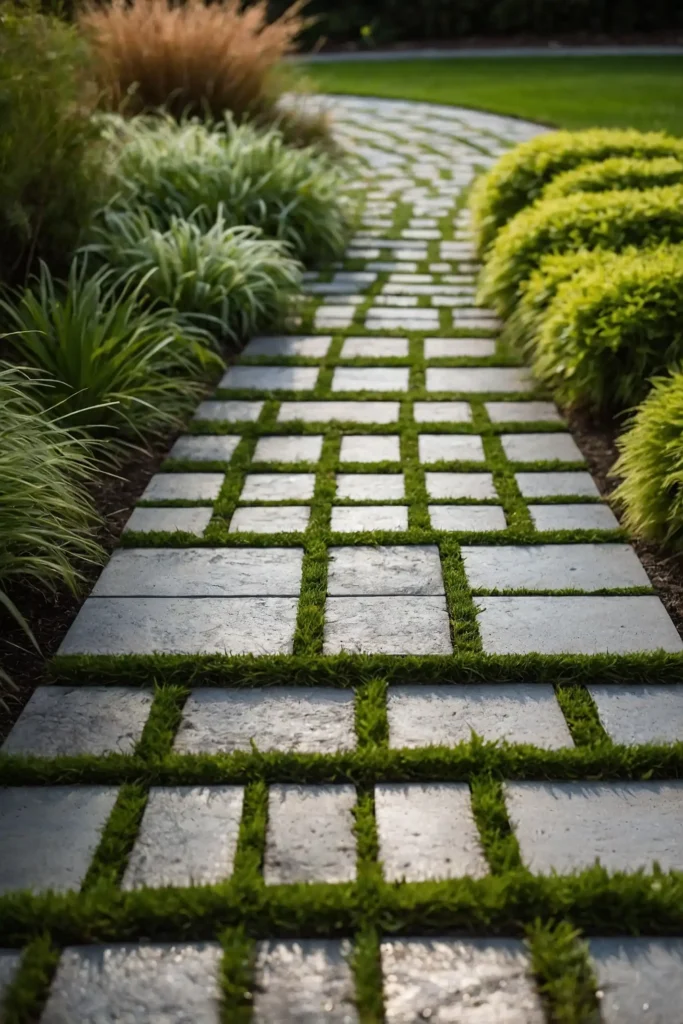
Create a checkerboard effect by alternating concrete pavers with squares of grass.
This design combines hardscaping with living elements for an eco-friendly path with visual interest.
The grass sections allow for better water absorption than solid pathways.
This approach works particularly well for lightly trafficked areas and creates a playful, geometric pattern.
7: Gravel Path with Metal Edging

Install a gravel pathway contained by sleek metal edging for a contemporary look that’s budget-friendly and easy to maintain.
The metal creates clean lines that contrast beautifully with organic garden elements.
Choose angular metal edging for modern landscapes or weathered steel for a more rustic effect.
The crunching sound of gravel underfoot adds a sensory element to the garden experience.
8: Wooden Boardwalk Style
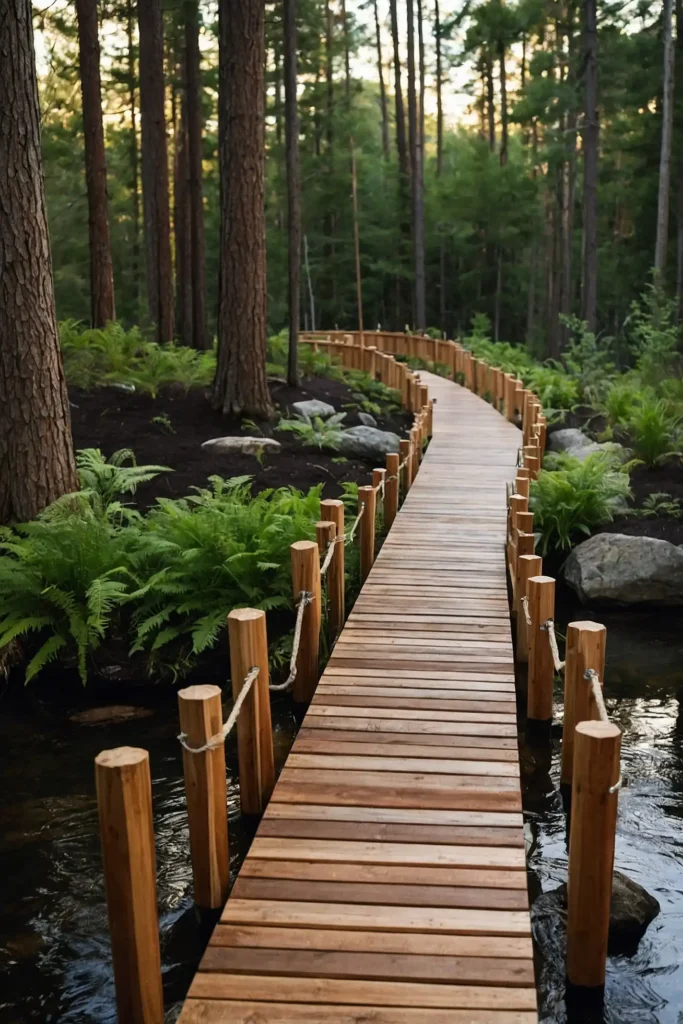
Build an elevated wooden walkway that floats slightly above ground level.
This design works beautifully in areas that tend to collect water or in sections where you want to protect delicate groundcover.
Use weather-resistant wood like cedar or pressure-treated lumber for longevity.
The raised profile adds architectural interest while making your path more visible in dimly lit conditions.
9: Mosaic Masterpiece
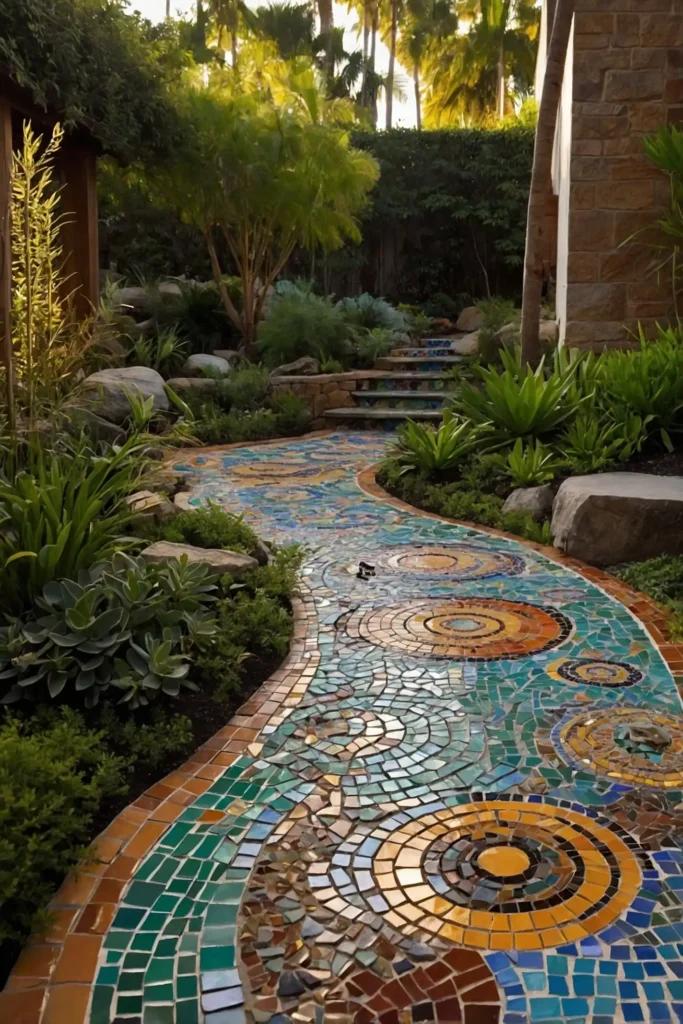
Create a showstopping mosaic pathway using broken tiles, colorful stones, or glass pieces.
This artistic approach transforms a functional element into a permanent art installation.
Focus your mosaic work on a small section of path for maximum impact without overwhelming your space.
The intricate details invite visitors to slow down and appreciate your creativity.
10: Permeable Paver System
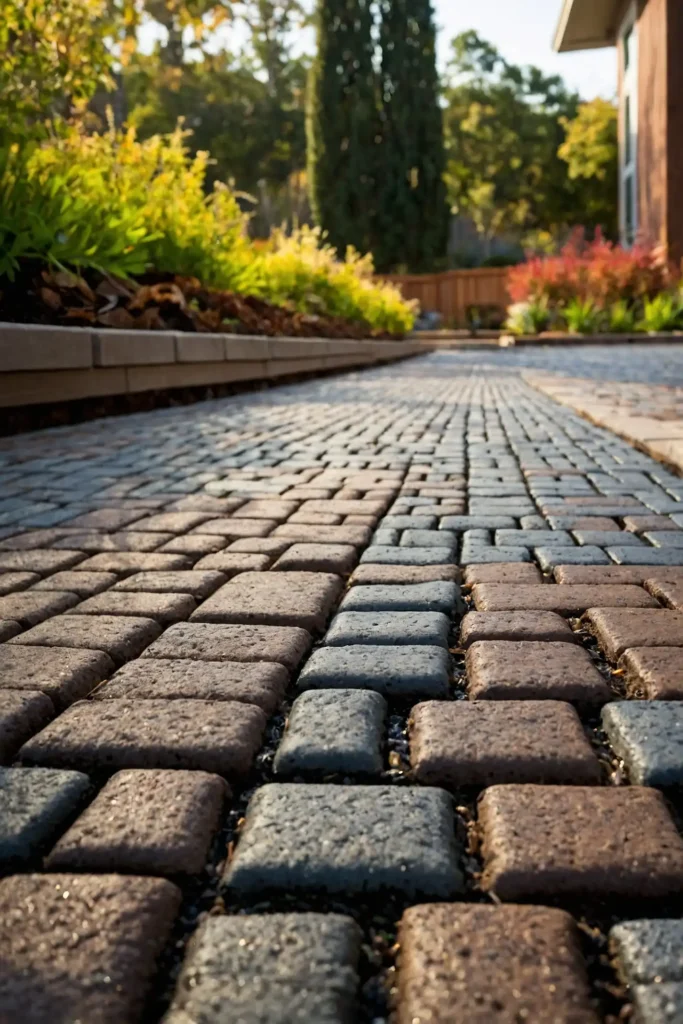
Install eco-friendly permeable pavers that allow rainwater to seep through into the soil below.
This sustainable choice reduces runoff while providing a stable, attractive walking surface.
These specialized pavers come in various styles and colors to match your landscape design.
Their environmental benefits make them increasingly popular for modern, eco-conscious yards.
11: Embedded Object Path

Press decorative objects like colorful marbles, shells, or fossil imprints into wet concrete to create a one-of-a-kind pathway.
This personalized approach showcases your interests and tells a story.
Collect items with special meaning to make your path truly unique.
Children particularly enjoy participating in this creative process and finding their contributions during future garden visits.
12: Curved Path with Plantings
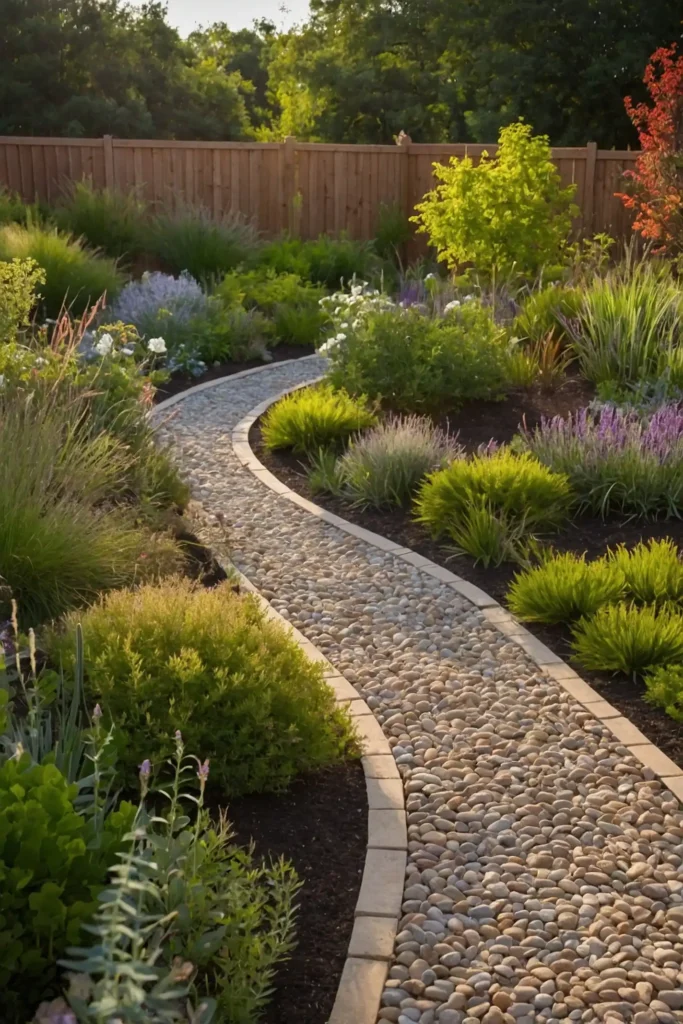
Design a gently winding pathway that meanders through garden beds, creating a journey of discovery.
Curves slow foot traffic and encourage visitors to notice plants along the way.
Plant fragrant herbs or flowers that release scent when brushed against at pathway edges.
This multi-sensory experience elevates a simple walk through your garden into something magical.
13: Reclaimed Brick Walkway
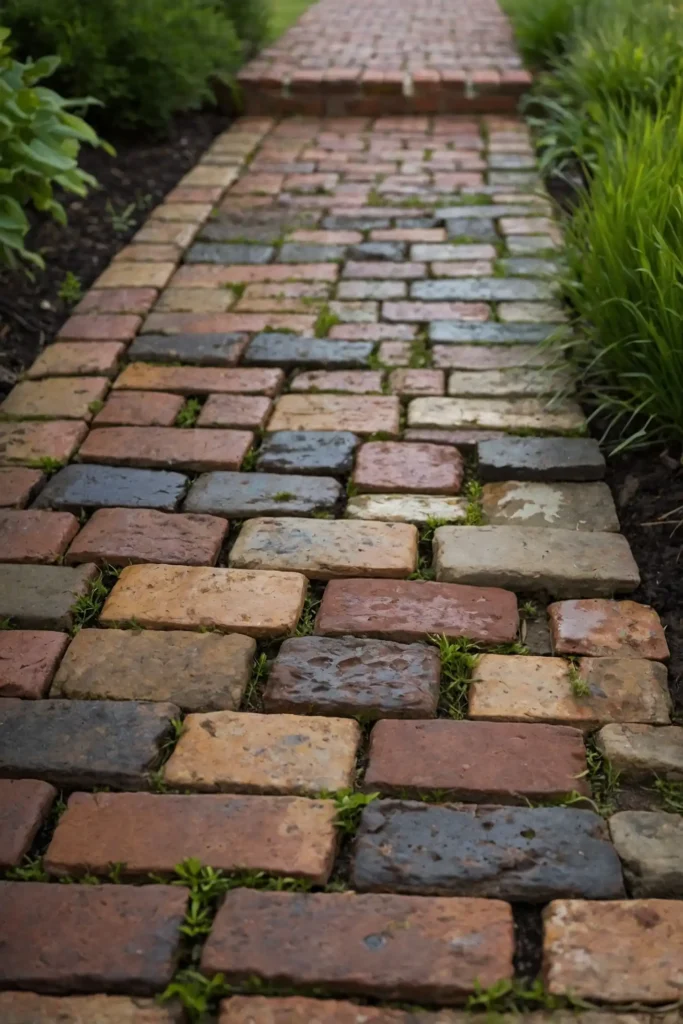
Source antique or salvaged bricks for a pathway with instant character and history.
These weathered materials bring warmth and timeworn charm to contemporary landscapes.
Each unique brick tells a story through its imperfections and patina.
The varied colors and textures create visual interest even in a simple running bond pattern.
14: Crushed Granite Path
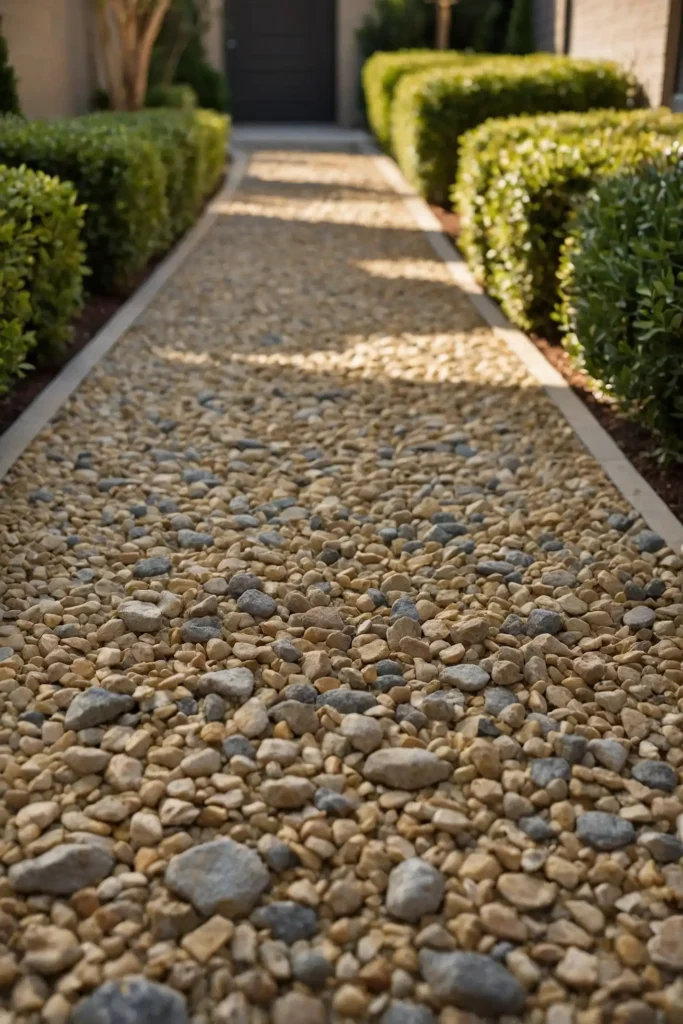
Install a pathway of decomposed granite for an affordable, natural-looking surface with excellent drainage.
This material compacts well while remaining somewhat permeable.
The fine texture creates a smooth walking surface that works with nearly any garden style.
Choose warm gold tones for Mediterranean gardens or cooler gray hues for more contemporary spaces.
15: Japanese Stepping Stones
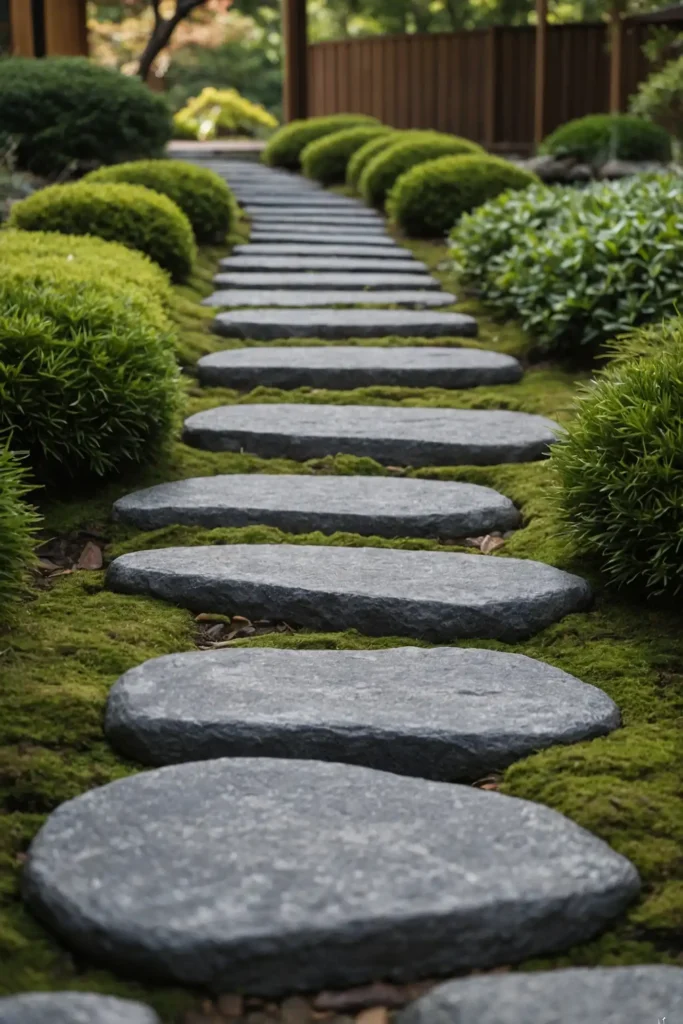
Arrange large, flat stones in an offset pattern to create a meditative walking experience inspired by Japanese garden design.
This approach emphasizes mindful movement through the landscape.
Space stones at a comfortable walking distance but not too regularly.
The intentional placement encourages visitors to focus on each step, creating a more contemplative garden experience.
16: Poured Concrete with Decorative Cuts
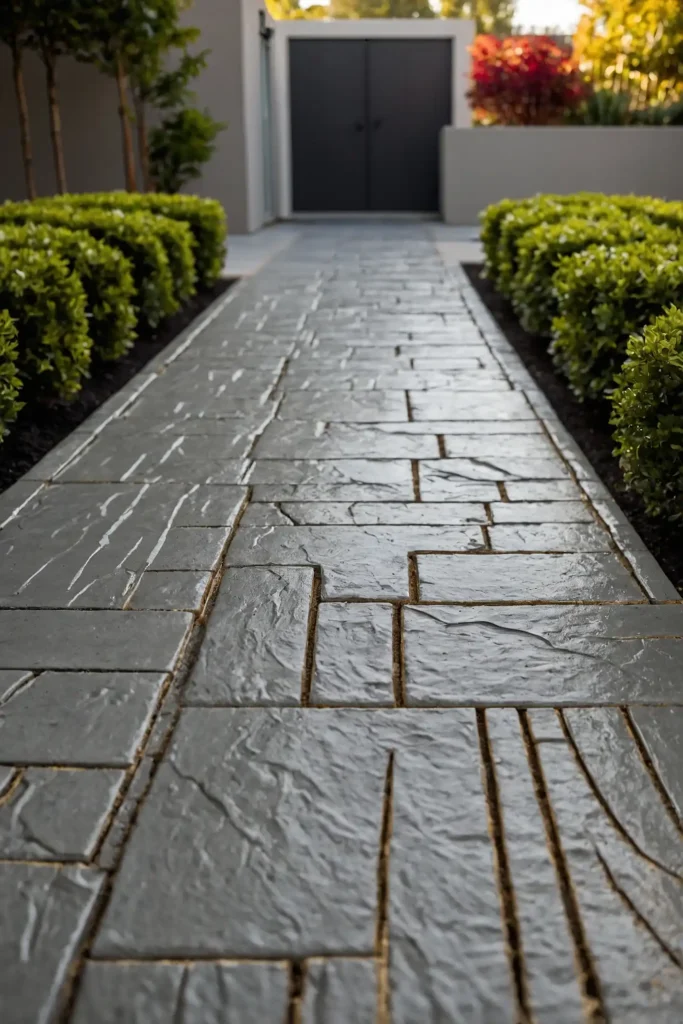
Install a concrete pathway with decorative saw cuts that create the appearance of large pavers.
This technique delivers the durability of a solid concrete path with more visual interest.
Add colorful stain to sections for a custom look that complements your home’s exterior.
The clean lines work particularly well in modern and contemporary landscape designs.
17: Mulch Path for Woodland Areas
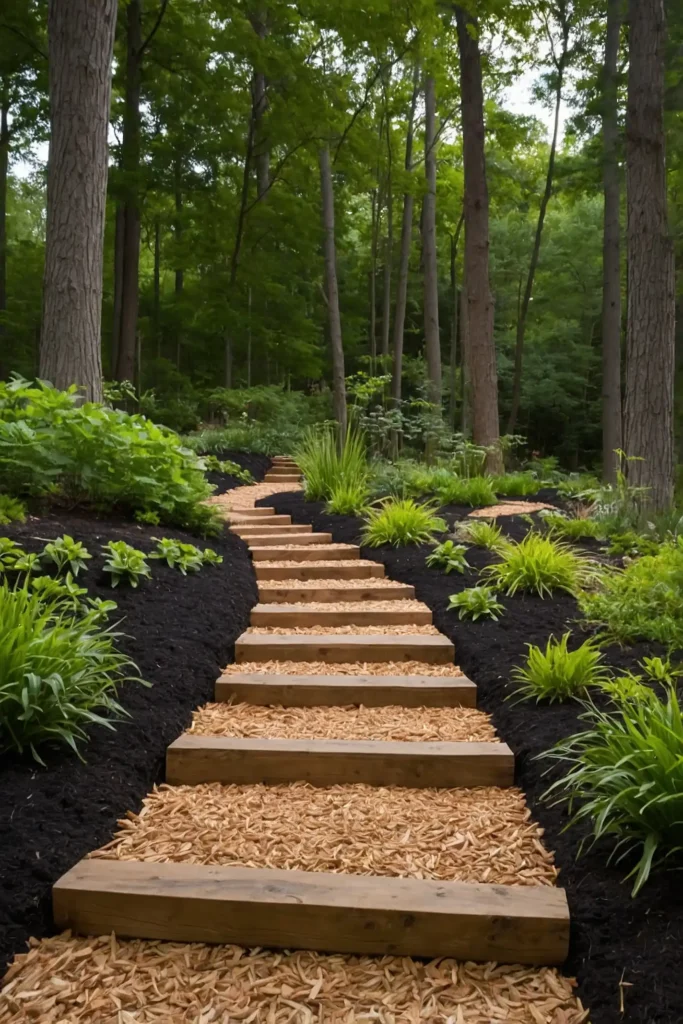
Create informal pathways through naturalistic areas using wood chips or bark mulch.
This budget-friendly solution blends beautifully with woodland gardens and shaded retreats.
Edge your mulch path with fallen logs or large stones for definition.
This soft-surface walkway creates minimal disruption to existing root systems and regenerates naturally over time.
18: Flagstone with Thyme Plantings

Lay irregular flagstones with sufficient space to plant creeping thyme or other low-growing herbs between them.
These plants release fragrance when stepped upon and soften the hardscape.
Choose drought-tolerant varieties that can withstand foot traffic.
The combination of stone and living groundcover creates a cottage garden feel perfect for informal landscapes.
19: Painted Concrete Surprise

Transform a plain concrete path with outdoor-grade paint in vibrant colors or patterns.
This budget-friendly upgrade adds personality and visual impact to an otherwise utilitarian feature.
Create geometric designs, faux tile patterns, or nature-inspired motifs.
The unexpected burst of color guides visitors through your space while showcasing your creative spirit.
20: Elevated Sleeper Walkway

Construct a pathway using horizontal timber sleepers or railroad ties for a rustic, substantial look.
This raised design creates definition and can help solve elevation changes in your yard.
The chunky proportions make a bold statement in the landscape.
Use metal spikes to secure the timbers and prevent shifting over time for a stable walking surface.
21: Modern Concrete Pad Path
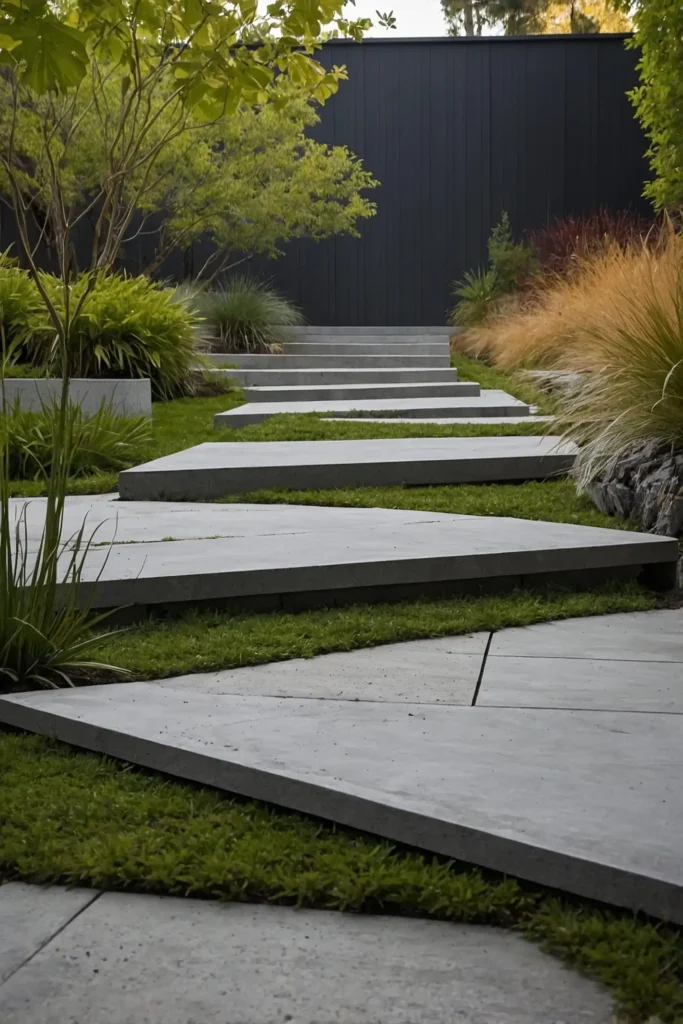
Create a minimalist pathway using large square or rectangular concrete pads with space between them.
This contemporary approach combines clean lines with glimpses of groundcover or gravel.
The substantial scale of each pad creates a strong geometric presence.
This design works particularly well in modern landscapes with architectural plantings and clean lines.
22: Shell-Topped Pathway
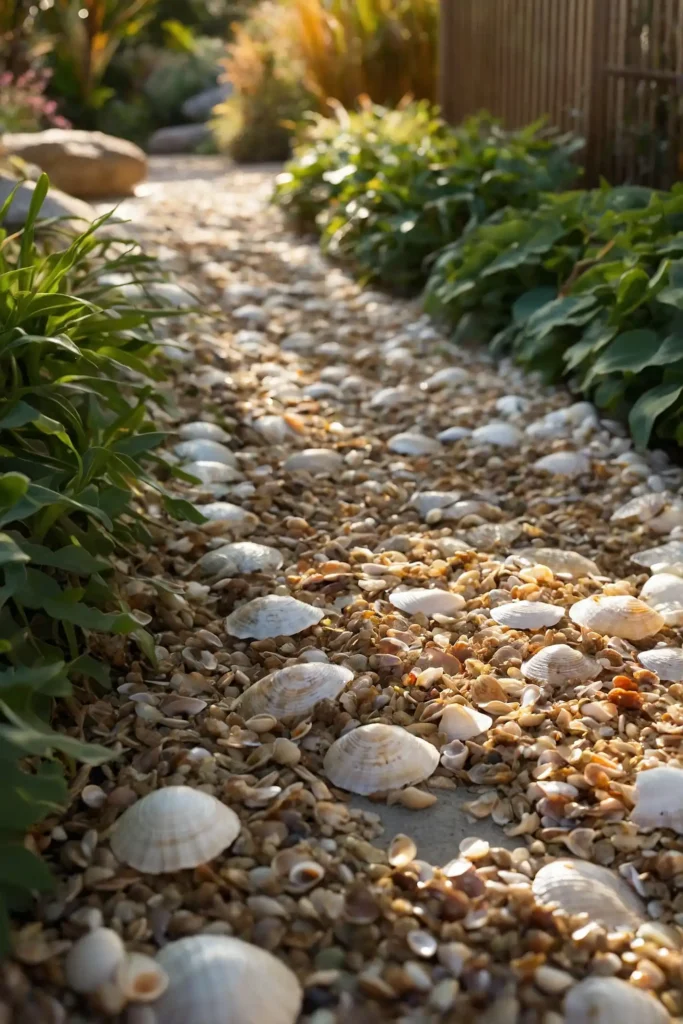
Surface a pathway with crushed seashells for a coastal-inspired walkway that glimmers in the sunlight.
This light-colored material brightens shady areas and provides excellent drainage.
The crunching sound underfoot adds sensory appeal to your garden experience.
This natural material gradually breaks down over time, improving your soil while maintaining its pathway function.
23: Circular Pattern Focal Point
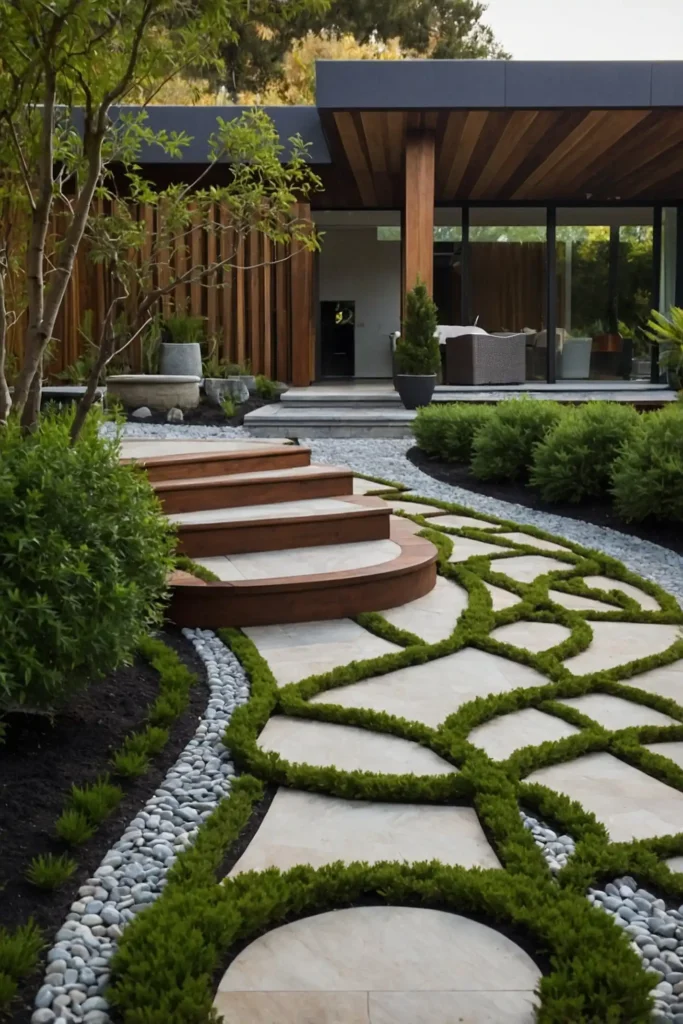
Create a circular paver design where pathways intersect to establish a focal point and gathering space.
This technique draws visitors into the central feature of your landscape design.
Use contrasting materials or patterns to emphasize the circular element.
This design strategy works beautifully for highlighting a specimen tree, sculpture, or water feature.
24: Pebble Mosaic Surface

Embed small rounded pebbles in concrete to create a textured, non-slip pathway surface with natural appeal.
The varied colors and sizes of stones create visual interest and tactile variety.
Arrange pebbles in patterns or gradients for added visual complexity. This labor-intensive but rewarding technique creates a durable path with artisanal character.
25: Grass-Jointed Pavers
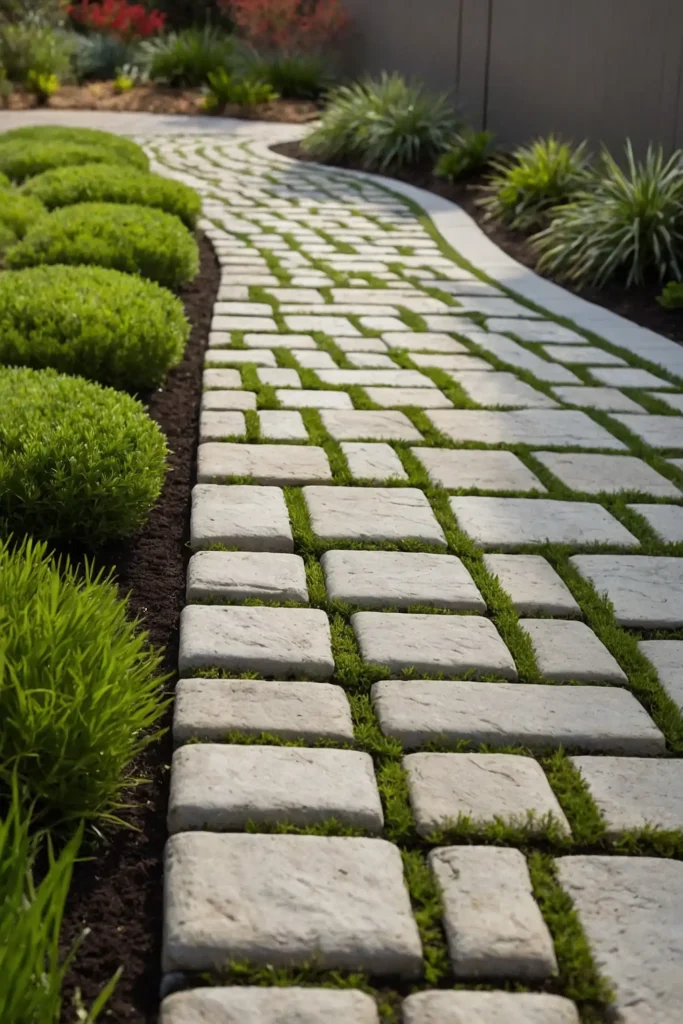
Install pavers with wide joints specifically designed to allow grass growth between them.
This hybrid approach combines the stability of hardscaping with the softness of living plants.
The green joints reduce runoff and heat absorption compared to solid paving.
This eco-friendly option works well for driveways and larger pathways that need to support occasional vehicle traffic.
26: Repurposed Material Path
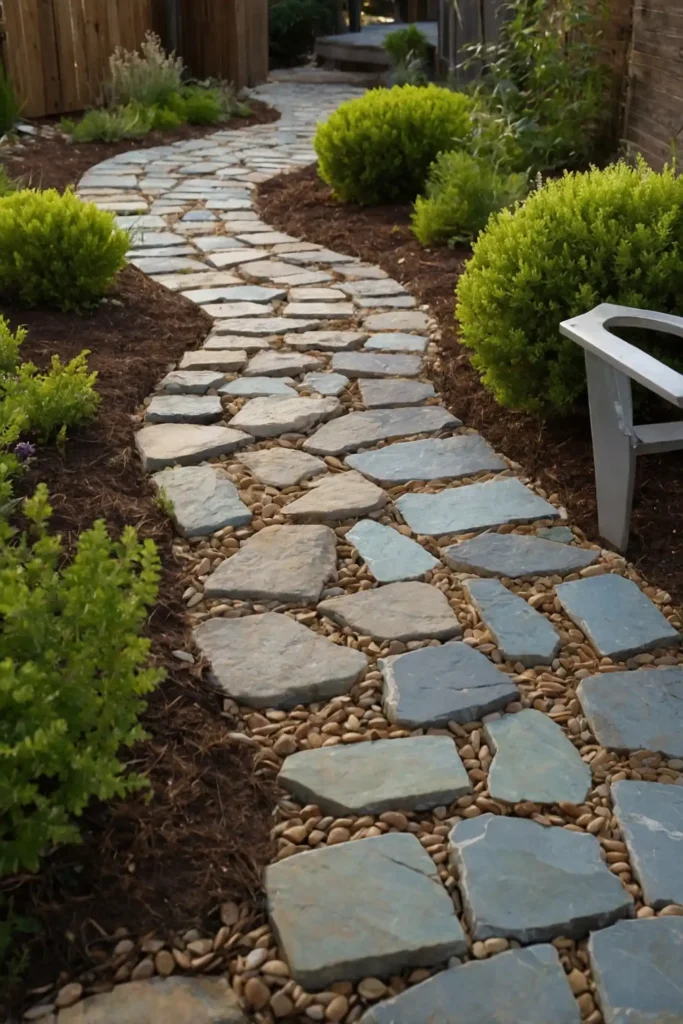
Create a sustainable pathway using repurposed materials like broken concrete (“urbanite”), salvaged tile, or reclaimed stone.
This eco-conscious approach gives new life to materials that might otherwise end up in landfills.
Arrange pieces puzzle-style for a cohesive look despite their irregular forms.
The resulting path has character and history while demonstrating your commitment to sustainable practices.
27: Playful Hopscotch Design

Incorporate a permanent hopscotch game into your pathway design using different colored pavers or painted concrete.
This whimsical element adds joy and encourages outdoor play.
Position your hopscotch path in a side yard or less formal area of your landscape.
This unexpected feature delights children and brings out the playful spirit in visitors of all ages.
Conclusion
Your garden pathways do more than just connect spaces—they guide the journey through your outdoor sanctuary.
Choose materials and designs that reflect your personality while complementing your home’s architecture and landscape style.





